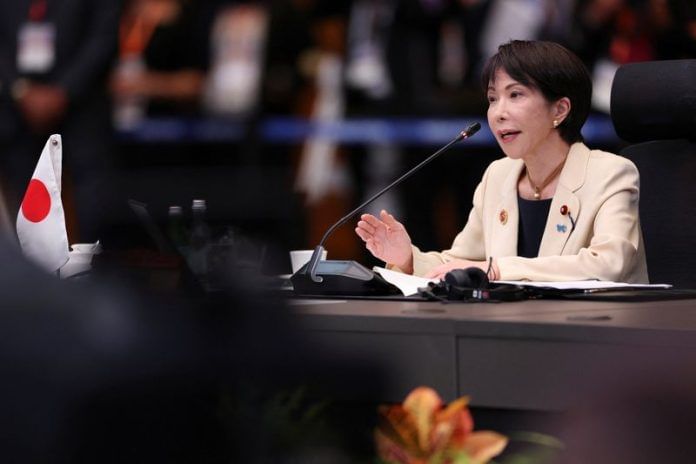TOKYO (Reuters) -Japanese Prime Minister Sanae Takaichi late last week said her government will ditch the current annual fiscal target in favour of one that measures spending through several years, essentially watering down the country’s commitment to fiscal consolidation.
The remark from Takaichi, known as an advocate of big spending, signals a major shift from past administrations that used the annual target as a key tool to show Japan’s resolve to get its fiscal house in order in the long run.
Under a long-term fiscal blueprint set in June, the government said it will aim to deliver a primary budget surplus sometime through fiscal 2025 to 2026.
When asked about the target, Takaichi told parliament on Friday she would drop the idea of using the annual primary budget balance as Japan’s fiscal consolidation goal.
Instead, the government will check progress in fixing Japan’s finances “by looking at its balance in a span of several years,” she said.
The primary budget balance, which excludes new bond sales and debt-servicing costs, measures the extent to which policy measures can be funded without resorting to debt.
Japan has repeatedly pushed back the timeframe for achieving a primary budget surplus as past governments continued to deploy massive spending packages to reflate the economy and fend off shocks such as the pandemic.
Takaichi has repeatedly criticised the primary budget balance as out of sync with global standards and constraining Japan’s ability to use fiscal tools to prop up growth.
Takaichi has said her administration will compile a spending package aimed at cushioning the blow from rising living costs, boosting investment in growth areas and defence.
Japan is saddled with public debt twice the size of its economy, which is the worst among major economies.
(Reporting by Leika Kihara; Editing by Chris Reese)
Disclaimer: This report is auto generated from the Reuters news service. ThePrint holds no responsibility for its content.






